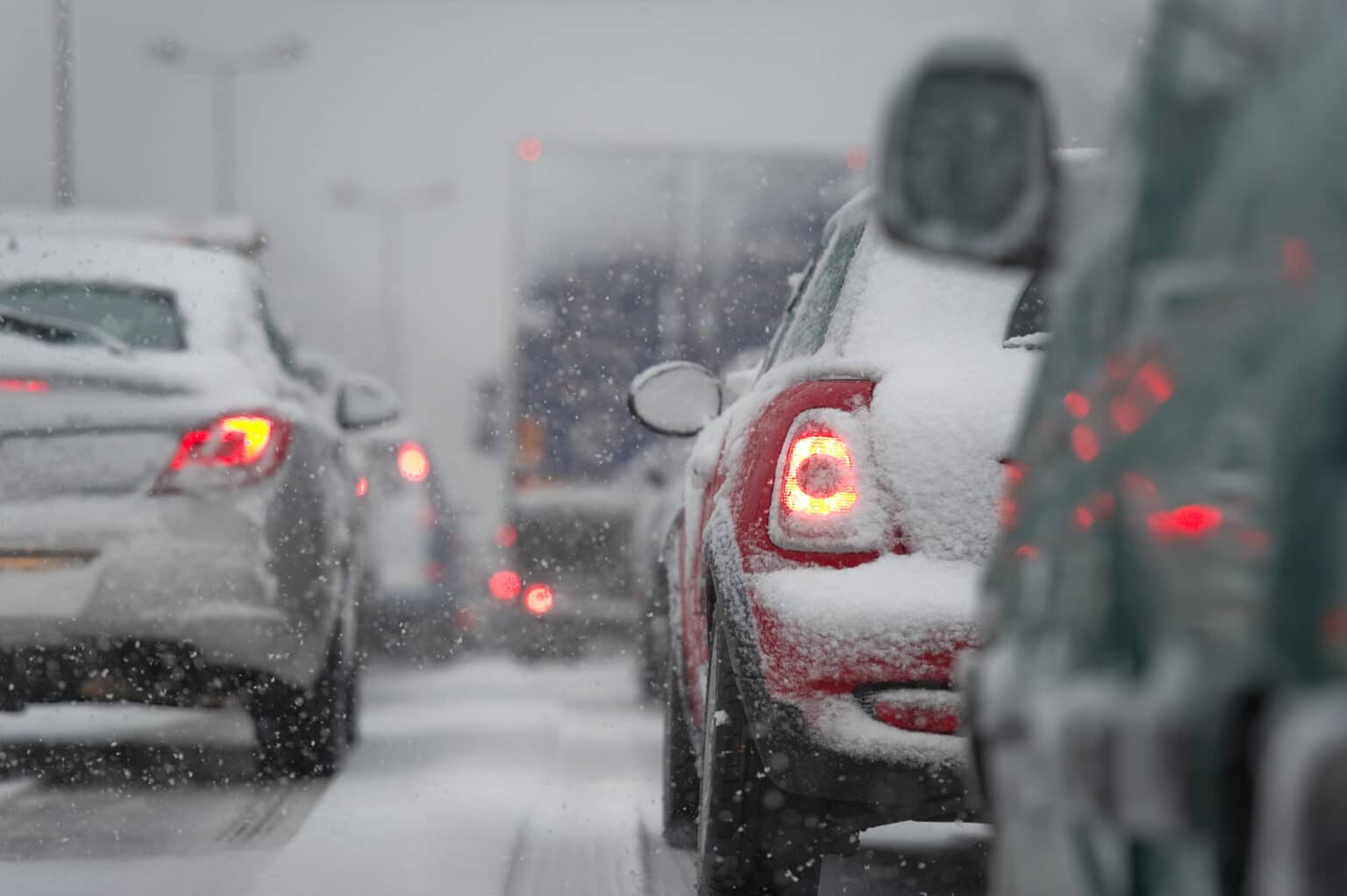Over the years, freezing temperatures and ice storms have brought many Texas communities to a standstill. During these severe weather events, roads and bridges become extremely hazardous, posing significant dangers to drivers.
Unfortunately, Texas’ infrastructure was not designed to withstand these icy conditions, raising concerns about the state’s ability to effectively handle such weather events.
Here’s what you can learn from past pileups to stay safe during bad weather.
How often do roads become dangerous due to cold weather?
On average, ice storms and extreme winter weather occur only once or twice a year in Texas. Most areas north of Interstate 10, which make up over half of the state, have at least one day of freezing rain annually.
Consequently, Texas cities are more accustomed to dealing with extreme heat rather than extreme cold. Many drivers may be vulnerable to cold weather events that deviate even slightly from the state’s usual conditions, and just a few degrees outside of the normal temperature range can quickly make roads precarious.
What is a notable example of a pile up in Texas?
One example of a pileup in Texas occurred on Interstate 35W in Fort Worth in 2021. This tragic chain reaction crash, caused by icy road conditions, resulted in six deaths and left dozens of people injured.
The pileup took place around 6 a.m., when around 135 vehicles lost control and crashed on the icy highway. The collision covered a distance of 1,100 feet and is considered one of the deadliest crashes in Texas history.
Sadly, two fatalities occurred when individuals exited their vehicles on that icy morning. Emergency personnel transported an additional 36 people with various injuries to nearby hospitals for treatment.
Who can be held responsible for a pileup?
Multiple drivers could be at fault for a pileup. For example, if a car stops and four cars behind it collide with each other, those drivers could be at fault because they were following the first car too closely.
Texas is a comparative negligence state, which means you can recover the full value of your losses if you are 50% or less at fault for the pileup. However, if you share some of the blame, the damages you can collect from other drivers’ insurance companies may be reduced based on your level of fault.
Apart from other drivers, there are other parties that could be liable for a multi-vehicle collision. In the Fort Worth pileup case, the company in charge of building and operating the toll lanes where the crash occurred was accused of contributing to the unsafe road conditions. There was debate over whether the company adequately treated the portion of the interstate with salt on the morning of the crash.
The company claimed to have fully activated their winter storm program and coordinated with TxDOT on best practices for snow and ice control. However, changes were made to the company’s winter weather operations following the crash, including revising employee training to incorporate new technologies and processes for monitoring roads.
If you are involved in a pileup crash, it’s important to have a qualified Texas personal injury attorney by your side. They can assess the situation and determine if any parties or companies should be held accountable for contributing to the hazardous conditions that led to your injuries. With a Texas car crash attorney’s help, you can ensure that all responsible parties are held accountable for their negligent actions.
Why do you need to check the weather before your morning commute?
In the case of the Fort Worth pileup, the area had been experiencing below-freezing temperatures for 36 consecutive hours prior to the incident. Despite road maintenance companies accounting for forecasted freezing rain and sleet and pretreating the roadways, cold weather can quickly affect road conditions.
When getting ready to commute in poor winter weather conditions, you need to assess the level of risk on the roads. This can be done by checking weather reports, state warnings, and making personal observations. For example, in the Fort Worth pileup case, that section of the interstate required additional de-icing treatment because precipitation started just minutes before the crash. By staying informed about current weather conditions, you can better understand the potential hazards you may encounter on your journey.
We strongly recommend discussing your concerns with your employer, documenting your requests, and exploring alternative options to cover work shifts if you feel unsafe commuting. If you need help navigating winter-related work hazards, make sure to contact a Texas personal injury attorney.
Can you be found negligent when you’re going the speed limit?
During winter weather, you need to be extra cautious with your speed for several reasons.
First, your speed directly impacts the severity of a crash on icy roads. By traveling slower, you allow yourself more time to react to potential hazards or avoid crashes altogether.
Second, driving at the speed limit can be considered negligent on icy roads. Even if you are following the posted speed limit, failing to adjust your speed to suit the current weather conditions can often be seen as reckless behavior.
Therefore, it is essential to reduce your speed, maintain a safe distance from other cars, and ensure that your tires, wipers, and brakes are in good condition.
It’s also important to be aware that driving in fog, snow, and rain can significantly reduce your visibility on the road. In January 2024, a fatal multi-vehicle pileup on Interstate 40 was caused by white-out conditions during a winter storm. Around 43 vehicles were involved in the subsequent pileup, and police believe that inclement weather and driver inattention contributed to the crash.
Investing in advanced safety features for your car, such as motion sensors, can help you respond more quickly to hazardous road conditions. These features can improve your ability to navigate safely in winter weather conditions by reducing your response time.
What should you do if you are involved in a pileup?
If you ever find yourself driving during a winter storm, follow these important steps:
- Exercise caution around big trucks: When driving near large trucks on Texas roads, be extra cautious. Previous pileups have shown that car drivers are at risk of being crushed or forced off the road by the sheer size and weight of these trucks. In a 2015 pileup in Amarillo caused by snowy weather, several big rig trucks were a threat to car drivers in a pileup involving more than two dozen vehicles.
- Stay in your car: If you are involved in a collision, wait until emergency responders arrive and determine if it’s safe to leave your vehicle. Until then, it’s best to remain inside your car. This is especially important in icy conditions, as getting out of your car can put you at risk of being struck by oncoming vehicles. For example, in the Fort Worth pileup, two of those killed were struck after getting out of their vehicles.
- Seek legal assistance: If you are involved in a pileup due to bad weather, contact a skilled Austin car accident attorney as soon as possible. They will evaluate the situation, determine who was at fault, and guide you through the legal process to ensure you receive the full value of your injuries.












